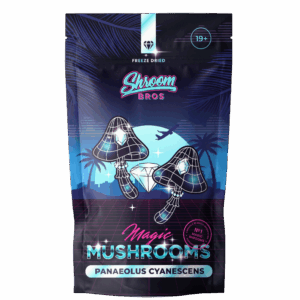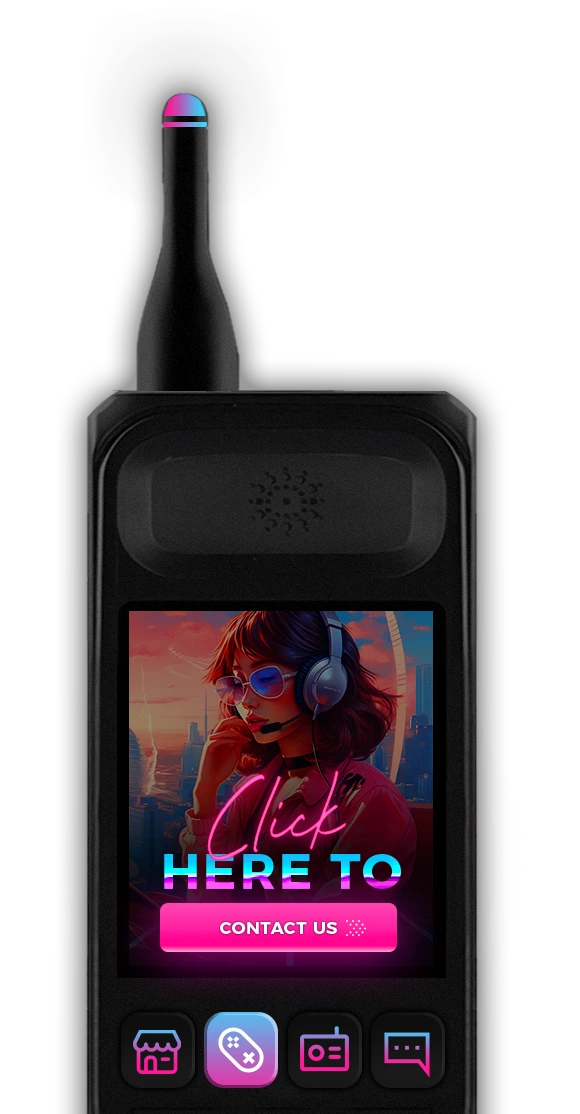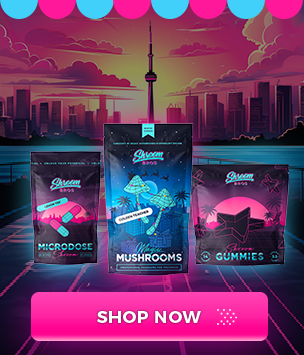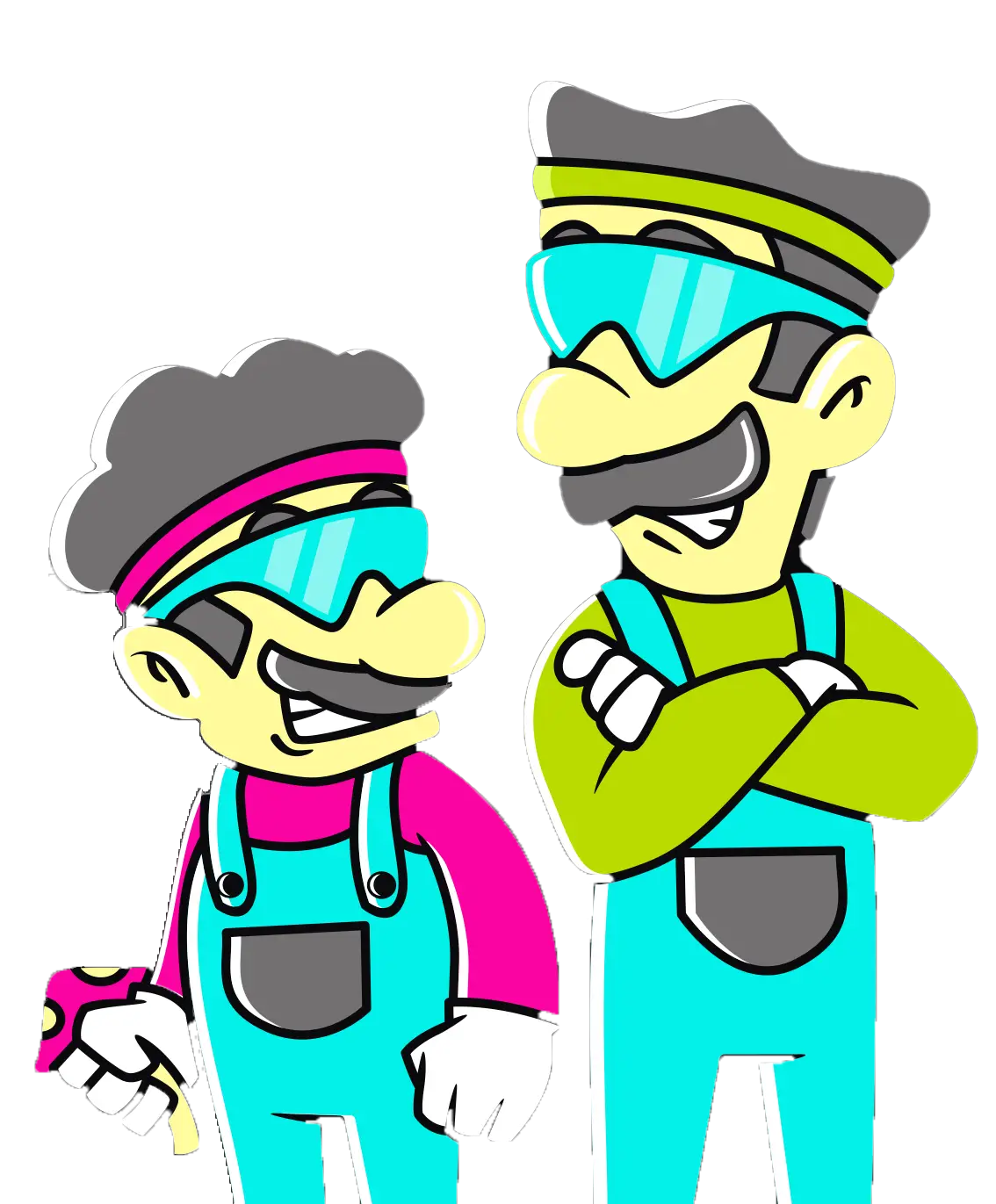For anyone who has explored the world of psychedelic mushrooms, Panaeolus cyanescens has an almost mythical reputation.
Known to many as “Blue Meanies,” this delicate white-stemmed mushroom is prized for its vivid, electric-feeling experience — and equally famous for its high price tag and its tendency to sell out quickly.
Why is it so expensive compared to common cubensis strains?
Why is it so hard to find, even in places where dried mushrooms are widely available online?
And how did this tiny, fragile mushroom gain such a cult following?
Let’s dig into the story of Panaeolus cyanescens — from its tropical roots and folk history to the modern challenges of cultivation that keep it rare today.
 A Brief History of Panaeolus cyanescens
A Brief History of Panaeolus cyanescens
This species is believed to have originated in tropical and subtropical grasslands where grazing animals roamed — regions like Southeast Asia, the Pacific islands, the Caribbean, Central America, and Northern Australia.
Spores likely spread along with cattle and water buffalo that were introduced to these areas by humans centuries ago. The mushroom adapted to their dung and thrived in the warm, humid climates that followed seasonal rains.
Ethnomycologists believe that Indigenous peoples in these tropical areas may have encountered and used these mushrooms long before Western science gave them a name.
In Hawai‘i, for instance, the mushrooms were long present in pastures before being formally described by mycologists in the early 20th century.
The name “Blue Meanies” only arrived decades later, popularized by Western travelers in the 1960s and 70s who were impressed by how quickly the mushrooms bruised blue and how intense their effects felt compared to the golden-capped Psilocybe cubensis they already knew.
Where the Strain Thrives
In the wild, Panaeolus cyanescens grows best in:
-
Fresh, well-aged herbivore dung (particularly cattle, horses, and water buffalo)
-
High humidity and warm temperatures, usually above 24 °C (75 °F)
-
Open grasslands that get seasonal rains followed by hot sunshine
These mushrooms fruit after heavy rainfall when the humidity spikes. Outside of these tropical zones they’re rarely seen because they simply don’t tolerate cold nights or long dry spells.
Their dependence on very specific weather and soil conditions — and on livestock — is a big reason they’re uncommon outside their native range.
What Sets Them Apart from Cubensis
Most people are familiar with Psilocybe cubensis, the thick-stemmed golden mushroom that’s grown around the world.
Pan cyan is visually very different: thin, pale stems; small delicate caps; gills that darken to an inky black as they mature; and an almost weightless dried texture.
The effects often reported by experienced users also stand out:
-
A fast onset, sometimes within 20–30 minutes
-
A clear, bright mental state that feels less heavy on the body
-
Intense, colourful visuals that can feel sharper and more crystalline
-
A trip that often peaks strongly but resolves cleanly, rather than dragging on
These traits helped build its reputation as a “connoisseur’s mushroom.” But those same traits — especially the delicate build — make it a challenge to grow, harvest, and ship.
Why Panaeolus cyanescens Is Considered Super Rare
1. A Narrow Ecological Window
Pan cyan is a true tropical specialist.
It doesn’t tolerate cooler, drier weather, which means there’s no natural wild crop in most temperate countries.
Even in its natural habitats it’s seasonal, appearing mainly after rains.
Collectors can’t count on it year-round the way people can with cultivated cubensis.
2. Difficult to Cultivate Indoors
Growers who try to cultivate Pan cyan face a much steeper learning curve than they do with cubensis.
The mycelium grows thinner and weaker, is easily contaminated, and often refuses to fruit unless temperature, humidity, and fresh-air exchange are just right.
Yields are usually lower per tray, so even a perfect run produces fewer grams to sell.
A small mistake in airflow or moisture can wipe out a whole batch — something that rarely happens with hardy cubensis.
3. Fragility of the Mushrooms Themselves
The mushrooms are lightweight and brittle.
Stems snap during picking, caps crumble when dried, and even gentle handling can turn a beautiful specimen into crumbs.
Sellers who care about presentation end up losing a portion of each harvest because it doesn’t survive the drying and packaging process intact.
4. Shorter Shelf Life and Potency Risks
Pan cyan contains a different balance of active alkaloids, and some of these degrade faster if exposed to heat, light, or oxygen.
To keep them potent, growers have to dry them gently at low temperatures, seal them quickly, and store them cool and dark.
Even with best practices, they don’t keep quite as long as cubes, which makes long-distance shipping and stocking more complicated.
5. Mislabeling and Authenticity Issues
Because “Blue Meanies” became a buzzword for “strong shrooms,” plenty of cube strains have been sold under the same name.
True Pan cyan is slimmer, paler, and has black spores.
Reliable vendors who can prove the authenticity of their product with photos, spore prints, or testing tend to charge more because they’re offering the real deal.
The Economics of Scarcity: Why It’s Expensive
All these challenges create a classic supply-and-demand squeeze.
There are fewer skilled growers willing to risk their time and substrate, the mushrooms yield less per harvest, and they require more careful handling and packaging.
Meanwhile, demand stays strong because:
-
Connoisseurs love the clean, vivid headspace Pan cyan is known for
-
The strain has a mystique as a “boutique” mushroom
-
People who have tried cubes often want to experience something different
The result is that prices climb.
You’re not just paying for the mushroom; you’re also paying for the losses, labour, and craftsmanship it takes to get it from spore to sealed pouch without losing its magic.
How the Experience Compares
Most seasoned users describe Pan cyan as:
-
Quicker to come on — sometimes noticeably faster than cubes
-
Bright and lucid in the mind, less “muddy” or sedating
-
Strongly visual, with colourful patterns and crisp detail
-
Efficient in the arc of the trip, with a solid peak and a tidy landing
Every person’s response is unique, but this reputation has added to its status as a “special-occasion” strain for people who appreciate its distinctive character.
A Short Cultural Timeline
-
Pre-colonial era: Likely known and occasionally used in parts of Southeast Asia and the Pacific, though evidence is sparse.
-
19th century: Western mycologists first describe Copelandia cyanescens (an earlier scientific name) from tropical collections.
-
Early 20th century: The species spreads with cattle across tropical pasturelands worldwide.
-
1960s-70s: Western travellers and psychonauts popularise the nickname “Blue Meanies” for its intense effects.
-
Modern era: Indoor cultivation develops but remains challenging; Pan cyan retains a reputation as a rare, high-end option.
Buying Tips for Today’s Consumers
If you’re shopping online:
-
Look for clear photos of the current batch. Pan cyan should look slim and delicate, often with blue bruising on the stems.
-
Check the shop’s reputation — reviews often mention whether the effects were consistent with authentic Pan cyan.
-
Expect some crumble inside the pouch; it’s normal for such a fragile mushroom and doesn’t mean it’s weak.
-
Store them properly: cool, dark, dry, and in an airtight container with a desiccant pack to slow down moisture changes.
The Bottom Line
The story of Panaeolus cyanescens is part history, part biology, and part economics.
It’s a tropical species that spread with grazing animals, became a cult favourite in the psychedelic movement, and remains hard to produce at scale because of its ecological needs and delicate nature.
Every gram that reaches a shop’s shelves has survived a journey that includes finicky growing conditions, fragile harvesting, careful drying, and fast shipping.
That journey explains both the price premium and the sense of rarity that surrounds these “Blue Meanies.”
For enthusiasts who value a bright, visual, connoisseur-grade experience, the higher cost can feel worth it — especially when purchased from a vendor who respects the mushroom’s fragile nature and handles it with care from spore to package.
Buy The Best Magic Mushrooms in Canada Right To Your Doorstep! (19+)

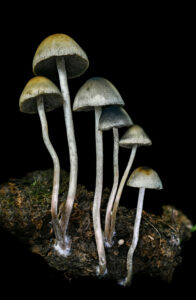 A Brief History of Panaeolus cyanescens
A Brief History of Panaeolus cyanescens